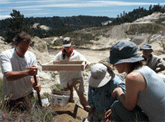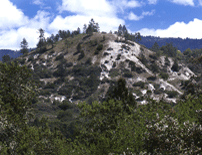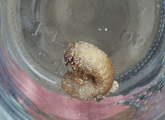
A variety of individuals, institutions, agencies, organizations, and businesses are involved in Sandhills conservation. Current projects with the potential to greatly influence long-term, regional conservation include:
The County of Santa Cruz and City of Scotts Valley are developing a Regional Habitat Conservation Plan (HCP) for the Santa Cruz ("Zayante") Sandhills. Habitat conservation plans (HCPs) are documents used to obtain incidental take permits which allow 'take" (killing, harming, removing habitat, etc.) of endangered species, which is otherwise prohibited under the Federal Endangered Species Act. HCPs describe how the impacts of projects on endangered species will be mitigated; that is, avoided, reduced, repaired, and compensated for, as occurs when habitat elsewhere is preserved and managed for the endangered species.
As a Regional HCP, the plan will provide incidental take permits for multiple projects occurring within the Sandhills. In doing so, it will reduce the regulatory and financial burden of developing in the Sandhills, as HCPs can be time consuming and costly for landowners to develop. The Sandhills Regional HCP will create a coordinated process to ensure compliance of development projects with other local, state, and federal laws protecting endangered species and other components of the environment.
At the same time, the Sandhills Regional HCP will contain a conservation strategy designed to protect, enhance, and promote the recovery of special status species and the structure and function of the natural communities in the Sandhills ecosystem. It will be based on an assessment of remaining habitat and available scientific information about the ecology of the endangered species and communities.
Incepted in 2004, the Regional HCP is in its early stages of development. More information about the Sandhills Regional HCP can be found at the County of Santa Cruz Environmental Planning Web site.
Like all Sandhills habitat patches, the Quail Hollow Quarry habitat set asides have been degraded by recreation and exotic species. In addition, fire exclusion threatens to reduce populations of plants and animals adapted to open canopy conditions maintained by recurring fire. To address the need for management to maintain or enhance the endemic species and communities, Granite Rock is developing a Long Term Management and Maintenance Plan (LTMMP) for the habitat set asides. Once completed, the LTMMP will describe the management activities that Granite Rock will employ to combat habitat degradation, and how they will monitor the sensitive species populations within the habitat set asides to ensure that management is effective.
Incepted following completion of the HCP in 1998, the draft LTMMP is currently being reviewed by the agencies. More information about the LTMMP for the Conservation Areas of the Quail Hollow Quarry can be obtained by contacting the Granite Rock Corporation.

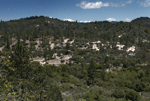
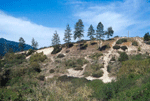
The Zayante Sandhills Conservation Bank is a land bank designed to preserve, enhance, and restore key parcels of Sandhills habitat. It consists of a series of Sandhills habitat preserves that will be protected and managed in perpetuity to enhance Sandhills endangered species populations and their habitats. As in other land or mitigation banks, the costs of land acquisition, management, and monitoring in the preserves will be financed through the sale of conservation credits--the currency of the bank. Landowners conducting development projects in the Sandhills can purchase conservation credits to compensate for their project impacts on endangered species, as described in a Habitat Conservation Plan.
The US Fish and Wildlife Service, which administers the Federal Endangered Species Act, is responsible for approving conservation banks as well as the habitat conservation plans in which conservation credits are used to mitigate project impacts. As such, the USFWS is responsible for ensuring that the benefits of habitat preservation and management for endangered species equal or exceed the costs associated within development.
The Zayante Sandhills Conservation Bank began development in 2004. More information about the bank can be found at their web site.
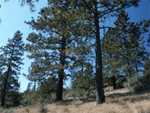

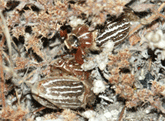
As part of a larger research program examining the ecology of the endangered insects of the Santa Cruz Sandhills, San Jose State University researchers are currently trying to determine what the endangered Mount Hermon June Beetle eats. This information will greatly enhance understanding of the endangered insect's habitat requirements.
June beetles (Polyphylla spp.) feed only during their larval stage when they live below ground, eating the roots of plants such as grasses and trees, including pines and fruit trees. In addition to the roots themselves, June beetle larvae may feed on mycorrhizae--fungal hyphae associated with plant roots.
To determine what Mount Hermon June Beetles eat, graduate student researcher Kirsten Hill iand her advisor Dr. Rachel O'Malley mark the locations of where they observe female Mount Hermon June Beetles burrowing into the sand after mating (top). Later in the season, they dig at the burrow locations and sift through the sand (middle) to obtain Mount Hermon June beetle larva (bottom) in order to examine the stomach contents and frass of larvae to determine what was ingested. They are also analyzing plant community composition to determine species commonly found with the breeding habitat.
Initiated in Summer 2004, the research is anticipated to be completed by fall 2005. More information can be obtained by contacting Kirsten Hill.
